Thousands of Syrian, Afghani, and Iraqi refugees are stranded on the border with Serbia after the Hungarian government refused them entry. The refugees, however, aren’t giving up so fast.
By Oren Ziv
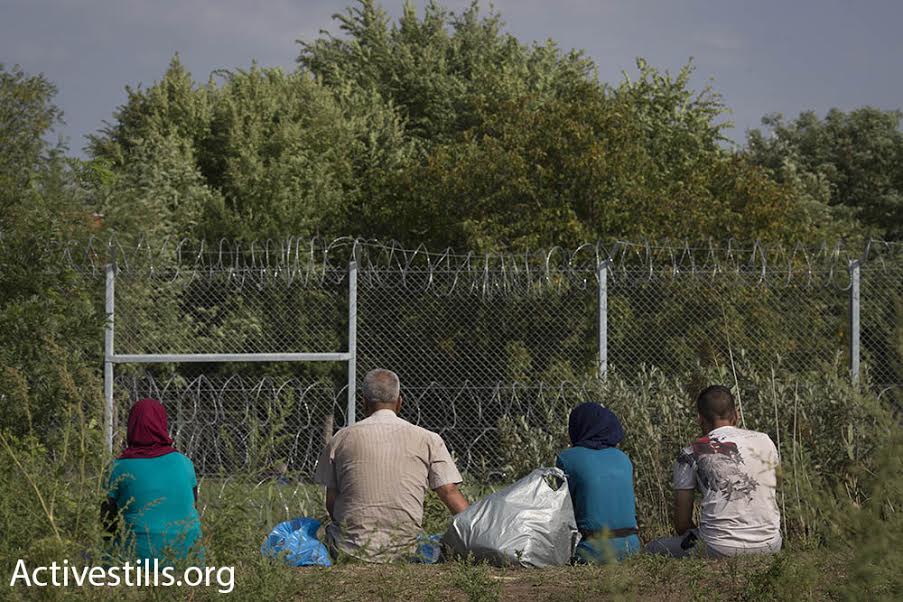
HUNGARIAN-SERBIAN BORDER — On Tuesday at around midnight, dozens of reporters and cameramen stand together on the Hungarian side of the border with Serbia. A representative of the Hungarian government, Zoltan Kovacs, steps away from the border crossing and tells the reporters: “Starting tonight the border is closed. Today almost 10,000 migrants crossed here, and we are determined to bring back Europe’s borders.
“Unfortunately the Greeks are not doing a thing, which is why we have decided to act,” he adds.
In its decision, which was roundly condemned by the international community, Hungary closed its border to refugees, blocking the main artery through which they had traveled from Greece to western Europe.

One of the journalists asks Kovacs: “What about Syrians who are fleeing war? You have no desire to help them?”
“We are very worried about those Syrians, and that is why I am telling them to stay in Turkey or Lebanon. Do not make the dangerous and expensive journey at sea.”
“And what happens if someone crosses the fence?” asks the journalist.
“There is no more open border, and anyone who crosses the fence will be detained and imprisoned.”

On Tuesday morning hundreds of refugees are making their way by foot toward the Serbian side of the border. They march along the train tracks until they reach the point that only yesterday was open for crossing. When they reach it, many are arrested in front of the newly-built barbed wire fence.
Over the past few weeks, the Hungarian government has built a 10 ft.-high barbed wire fence across its 100-mile long border with Serbia. While the fence was being constructed, refugees could still find many points through which they could cross over. But since Tuesday, everything has been closed and hundreds of policemen have been patrolling the area.
Three young Syrians march along the fence on the Serbian side, stopping in front of a large group of policemen. They sit down and ask to cross. “We fled Syria because of the war, we spent thousands of euros on the journey,” A., a young man from the Syrian city Homs tells me. “We have nowhere to return to, so I will find a different way.”
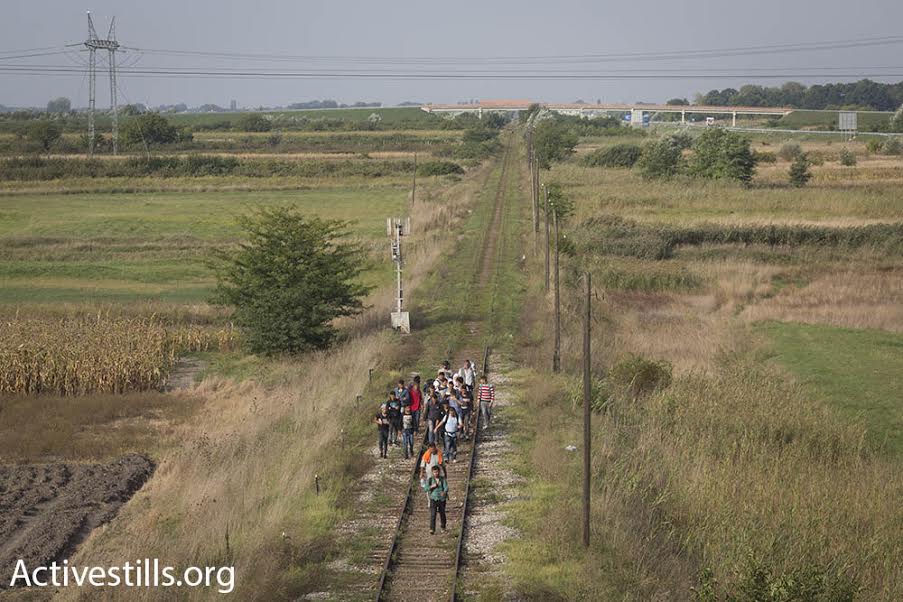
On Tuesday the refugees crossing Serbia — following a grueling journey from Turkey, Greece, and Macedonia — refuse to give up. News travels fast between the groups traversing the continent by foot, and many are hoping to reach the border fence themselves. On the train tracks, a group of 30 Syrians speaks with journalists, disappointed to hear that they were late by just a few hours.
Toward 11 a.m. the refugees who arrive march on the main highway toward the official border crossing. They sit down on the road between the Serbian and the Hungarian border crossings and begin to protest. The Hungarian police rushes to close the crossing, and dozens of policemen stand guard with pepper spray.
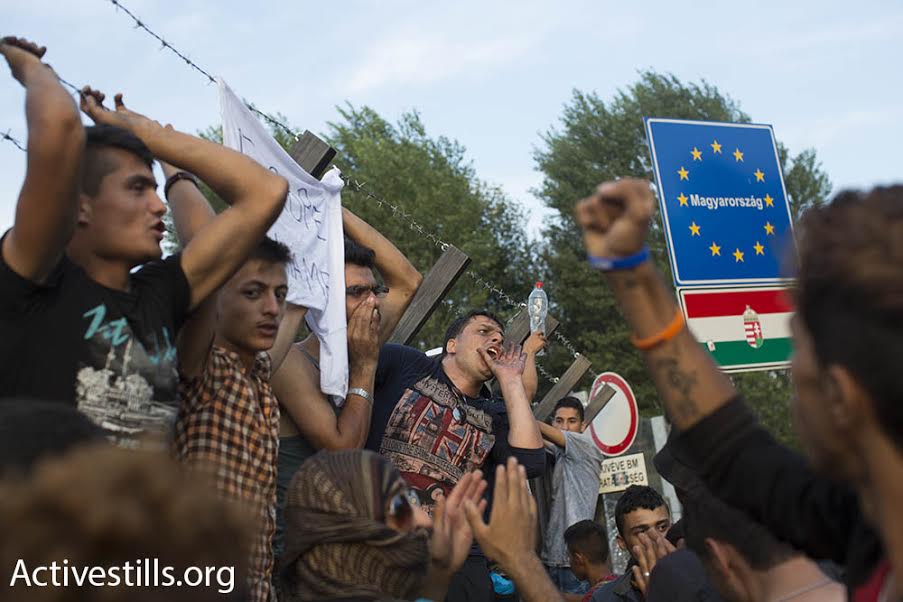
The protesters declare a hunger strike and chant in English: “No water, no food — open up the border!”
A young Syrian who leads the chants tells his fellow protesters: “Do not get close to the fence, this is a nonviolent protest, and we do not want anyone to get hurt.”
Many families bring tents and sleeping bags, setting up camp on the highway. On both sides of the border, dozens of trucks are stuck waiting in traffic.
While in Budapest, Austria, and Germany there are groups and volunteers helping the refugees, on the Serbian side there is almost no aid. This is because the refugees would hurry to cross into Hungary and would not wait on the Serbian side.
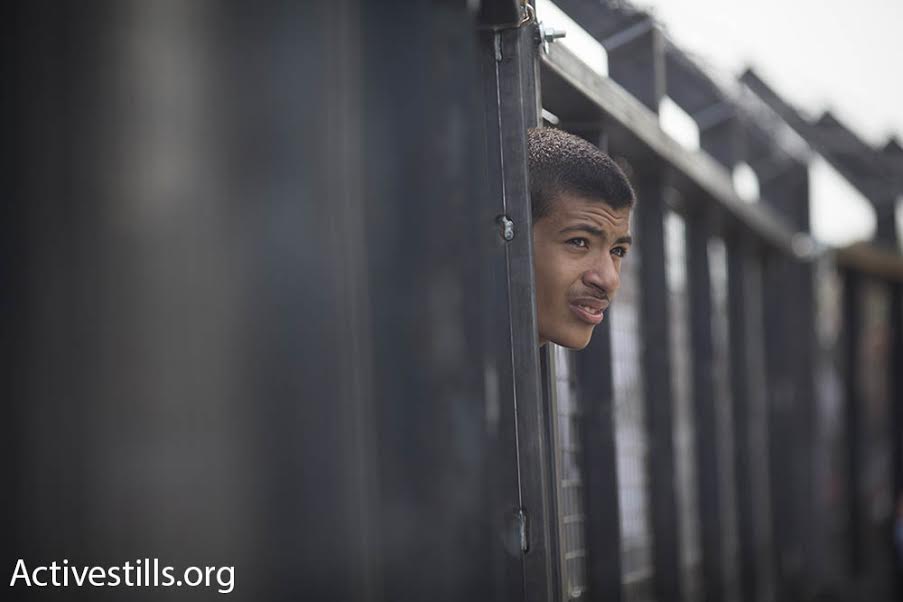
A Hungarian journalist says that it is hard to guess how the Hungarian government will act. “They want to show that they are not breaking because of a few refugees sitting on their border, they want to prove that they can stand behind their decision to close the border. On the other hand, the highway is the main thoroughfare for goods and people, which means they will not let this situation last very long.”
“If they let this group enter,” she says, “the thousands who are on their way from Greece will come here in the hopes that they will also be able to cross.”
Not far from here the Hungarian authorities have opened a small border crossing where refugees can file requests for asylum. The line is long, and many refugees leave after their requests were rejected. Many others refuse to go through the official process, according to which they will be sent to camps in Hungary should they be recognized as refugees. According to European agreements, an asylum seeker who is registered in an EU country cannot continue on to another country.
Most of the refugees have tried to cross Hungary as fast as possible, without registering in the country, in order to continue on to Austria and then Germany.
Toward the evening the rage and frustration in the makeshift camp facing the border crossing only grows. The refugees, who had hoped that the Serbian-Hungarian border would be their last stop on their way to the EU, look exhausted, disappointed, and confused. Small groups are seen leaving the area, walking in the general direction of the border with Romania. Others are trying to move farther away from the border crossing to areas with less Hungarian guards, where they hope to either hop the fence or crawl underneath it.
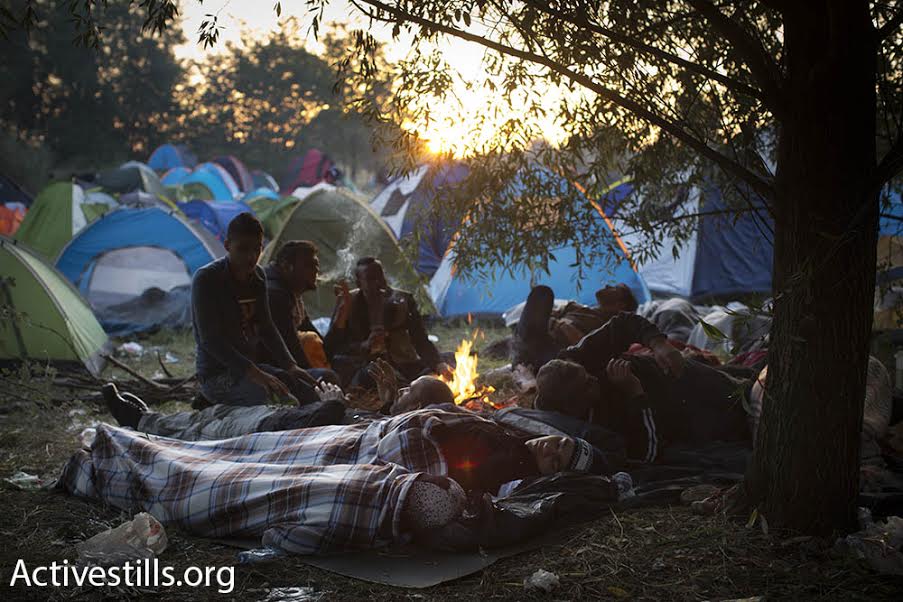
Not a single international group or government agency brings food or water. Trucks of volunteers pass out tea and dates. A group of Syrian refugees walk to the adjacent field, pick corn, and roast it on a bonfire. Others march toward the nearby town, where the local grocery story has a sign in English and Arabic that reads: “We do not accept euro, only dinar (the Serbian currency).”
Dozens of women sit with their young children near the crossing on the highway, hoping that the Hungarians allow them to cross. A young Syrian walks among the thousands who are sitting on the road, encouraging them to get closer to the police checkpoint and protest. “All of us together — Syrians, Afghanis, Iraqis!” he calls.
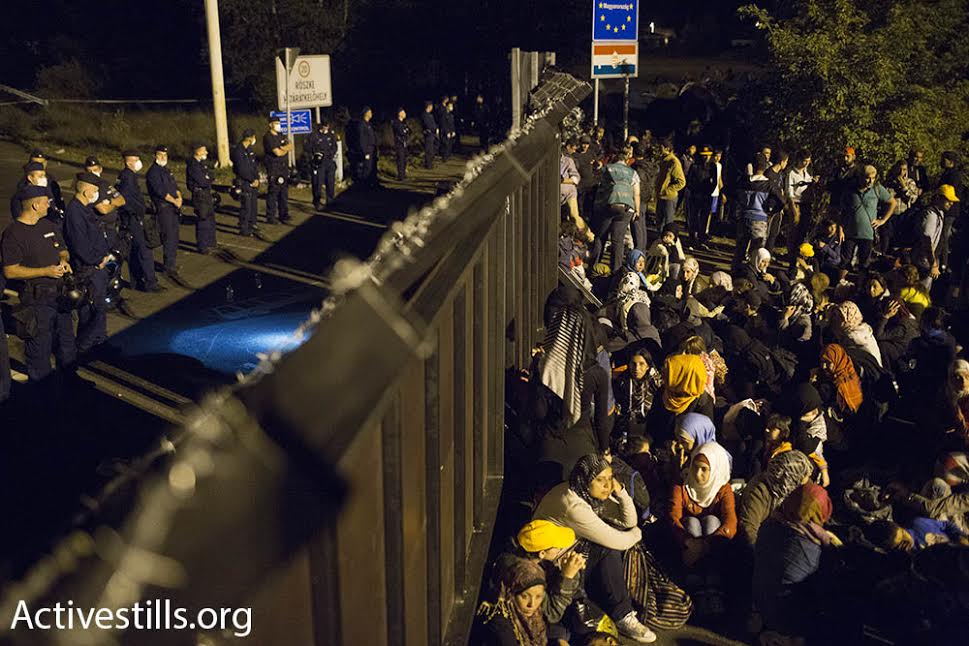
A number of protesters hold a sign that reads, “We love you Merkel,” in English. “We call her Mama Merkel,” says one of the men, “she really cares for us.”
“And what about you?” I ask him.
“I’ll reach Germany in the end, if not from here then another way.”


